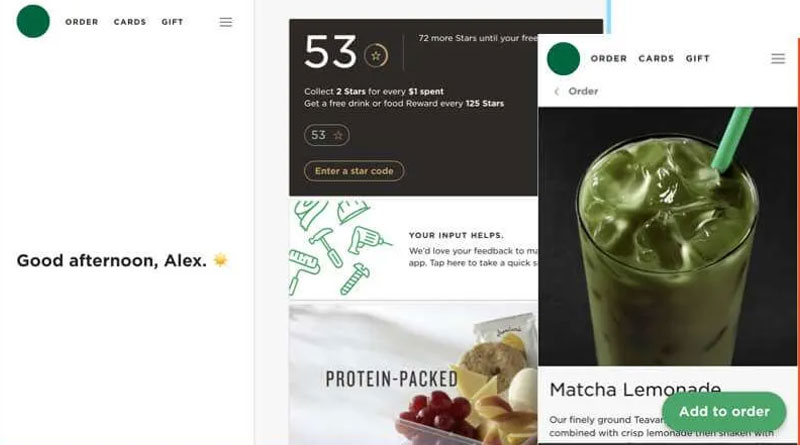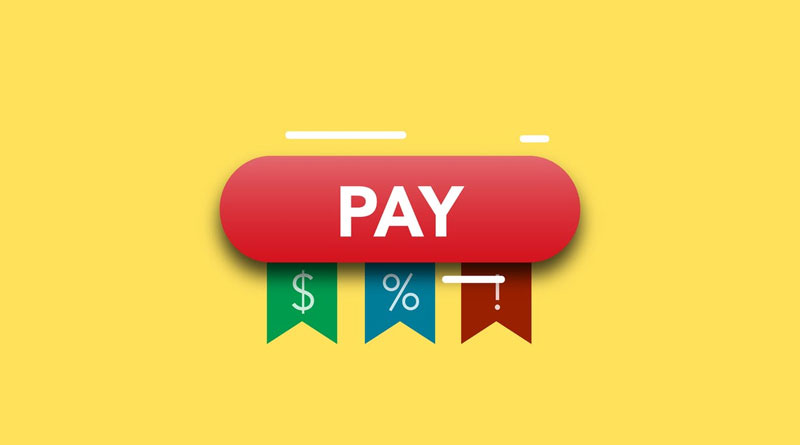Let me start the discussion off by sharing three interesting facts.
- There are nearly 24 million e-commerce stores in the world.
- Over 2 billion people shopped digitally in 2020.
- Less than 1 million e-stores make more than $1,000 in annual sales.
Shocking, right? So, with only around 600,000 stores making more than $1,000/year in sales, what the rest of them are doing? If the stats are to be believed, most of them are busy, making it harder for customers to buy from them.
A myriad of delivery-related issues, lack of transparency when it comes to shipping costs, and clunky website experiences are some of the consumers-cited issues that stand out when talking about the online shopping experience.
In this article, we will address these issues and give tips on how to improve your e-commerce store to make big on your lead conversion.
Hook Them in with a Stunning Website Design
During the peak of pandemic boredom in 2020, I came across this organic skincare brand. Talk about branding and marketing, you all. Green mixed with the right shade of gold to make it seem luxurious. Snazzy packaging, insane levels of details shared in product descriptions, and this stellar how-to video using micro-influencers that hit all the right spots.
As I was exploring natural skincare brands anyway, I was immediately sold on the product being featured in the video.
I clicked on the ad.
Not going to lie – the site was a mess. Every time I clicked on a product, it took me to its Live Chat option, where nobody was available. I figured it was a glitch. Tried it a couple of hours later, then a few days after. But the business never got the hang of it. It was a slow loading time if it wasn’t for the faulty internal linking. When that got better, and I was able to add that product to the cart, the navigation to other areas of the website was a singularly exasperating experience.
I eventually gave up and found another brand to shop with because there are only so many chances you can give to a brand based on its design and marketing alone.
So, if there is one thing that you must get right, it’s your e-store website. Even if you can’t afford to pay a developer to build you one, you can use a website builder to create an e-commerce website for your brand. Just pay attention to a few things:
- Use responsive themes to access your site on any mobile device and any screen size.
- Use high-quality visuals, including optimized HD images, product pictures, BTS photos, and video content.
- Make sure to keep the navigation accurate and simple (any site area should be accessible within three clicks).
- Pages should load quickly.
- The site should have updated security certificates.
- Display shipping rates on the Home Page.
- Optimize your site for SEO.
- Set up multiple payment options for an efficient buying journey.
Getting your web design right helps you initiate the customer journey with a greater potential for success.
Related: 10 Brilliant Ways To Scale Your Business Online
Help Customers Buy Quickly and Easily With a Progressive Web App
Let’s dive into the customer journey a bit more. Speed and convenience are an integral part of it. When a customer lands on your website with an intent to buy, you want them to reach the final stage without any hurdles or friction. Creating a progressive web app is a way to smooth out any wrinkles in your customer journey and make it more appealing, essentially enriching the customer experience.
A progressive web app is where the best things about websites and native apps meet. A PWA is swifter, more agile, and more functional on mobile devices than a traditional website. And compared to native apps, developing PWAs is cost-efficient, faster, and offers great support regardless of the bandwidth.
Brands such as Forbes, Starbucks, Twitter, Instagram, and more take full advantage of the agility and functionality of PWAs to make their mobile sites more enjoyable to browse and buy from. Since Starbucks launched its PWA to make online ordering more efficient, customers have noticeably stopped using its native app to place their coffee orders. The reliability and speed of its progressive web app make for a more optimized digital experience.
There are some key areas where progressive web apps outshine websites and native apps any day.
- PWAs are lighter to build and can run on low bandwidths with super-fast speed.
- Take fewer resources to build; less time, less money, less manpower, and smarter technology.
- Offers great engagement – as good as any high-functioning website or native app.
- Since you don’t have to download PWAs, customers prefer these over apps because of phone storage limitations.
If you are launching an online business or want to give an old one a stage that it has always deserved, consider building a progressive web app for this. The smooth transition from a social media ad to a great PWA is affirming for customers and helps them engage with your e-commerce store with a higher buying intent and greater interest.
Optimize Your Product Gallery

The importance of an organized, great-looking, and updated product gallery cannot be overstated. This is where all of your marketing and customer journey has led to. This last leg of the race is your final chance to convert visitors into buyers. So, give your customers everything they are looking for on your product pages.
Product Reviews:
Add latest reviews to product pages. Let people see what others are saying about the product. Online shoppers gave a high weightage to other people’s reviews of the products they intend to buy. Sometimes, reviews also contain important insight that is enough to convince a customer of the product. If you are afraid of negative reviews, make sure you turn it around by addressing it truthfully and offering a solution when possible. Customers love a brand that can take criticism and fixes its mistakes.
Product Descriptions:
Make your product descriptions as comprehensive as possible. Depending on the kind of goods and services you are offering, your descriptions can include size charts, methods to understand/read that chart, directions on how to use the product, benefits of the product, ingredients used, and other details. The more detailed you are, the more professional and knowledgeable you’ll seem, more reliable to buy from.
Highlight USPs
Highlight your unique selling points for customers who don’t want to dive into the details quickly and clearly. For example, on top of the product page, give a succinct itemization of why this product is a great answer to your needs.
Include Videos
Videos convert consumers. 62% of consumers who are on a website to make a purchase do so after watching a product video. Something about watching the product in action makes it more appealing for consumers to believe and buy.
Add FAQs
If people are asking questions about your product/services, turn them into an FAQ list and upload that on your product page to help customers answer any final queries they may have.
Build Credibility with Social Proof
Social proof is a psychological phenomenon, and like most psychological things, marketers have come up with ways to incorporate it into marketing to encourage purchase behavior. Using customer reviews on product pages is a way to use social proof to influence other people’s decisions.
For example, if you are on a fence about buying a particular project, listening to other people rave about it constantly will eventually convince you to give it a try. You essentially look at other people’s behavior to guide your own.
And it’s not a bad thing. I mean, who’d you rather trust? A slick marketer who’s being paid to tell you how great a product is? Or Janet from Arizona, who just bought the same jacket you have been eyeing for the past 20 minutes? 54 other people have rated it favorably, and there is only a limited number available in the stock anyway.
Proof – a company that uses social proofs to drive sales and conversions – claims to boost your web conversions by 15% in under 15 minutes. It uses several different kinds of social proofs to achieve these numbers:
- Desktop notifications about how many people bought a certain item in a given time (last 7 days, last 30 days, last 24 hours)
- Real-time sharing of live visit count on the page
- Sharing recent activity (who bought what, subscribed to what service, started watching a video)
The proof is easy to set up on your website and offers custom settings to add nuance to each of your campaigns. A/B testing allows you to see how these changes are affecting conversions and sales. The best thing, though, is that it is super-fast and only loads after your page content has loaded.
Even if you don’t want to invest in these high-tech social proof strategies, you can use website reviews, user-generated content, and influencer marketing to amplify your brand credibility.
Offer Interest-Free Credit Payments
Not many brands are doing it now, and those who do stand to gain the most from this market gap. Interest-free credit payments remove a variety of pain points from the customer journey.
- Your high-priced items become more affordable and enjoy a larger pool of potential buyers.
- You make your brand more accessible to buyers who may not be your usual potential consumers.
- The cost of the purchase is spread out over several months, which makes online buying less heavy on the budget.
- It becomes easier for buyers to shop more and buy high-priced items (furniture, for example).
- Incremental sales also increase the frequency of purchases without constricting customers’ budgets.
It’s important to note that interest-free credit payments are much different from Buy Now, Pay Later offers. With interest-free credit payments, you spread your purchase cost over a large period – sometimes several months. For example, with most BNPL schemes, you still have to pay your entire bill in one go – just only at a later date.
On the other hand, interest-free credit payment options allow you to pay the bill in instalments. Depending on the specific plan you are using or offered to you, your cost can be spread out to 6 weeks to 48 months.
The interest rates can also vary, even though we call these interest-free payment plans. Again, depending on the app, your interest fee may be nothing, while 30% in other cases. Afterpay, for example, offers 0% interest rates but only a 6-week payment plan. Alternatively, Affirm has better payment plans of 1 month to 48 months, but it may charge you anywhere between 0-30% interest.
When you choose an interest-free payment solution to integrate with your e-commerce store, you have to look at your inventory and your consumers. How much does your most expensive item cost? What is your average order amount? If you deal in an expensive business by default, incremental sales may be the answer you are looking for. It not only will widen your customer base but can also encourage your regular customers to buy more and often.
Communicate value in the product copy
When a product doesn’t sell well, it’s not because it’s terrible. There may be a lack of understanding on the part of the customer about how your product will benefit them.
The value of the product should be communicated at every point where the product appears in an online store. The product descriptions are a great place to start.
Choose products that solve customers’ problems and showcase them. Conversions and sales should increase.
Conclusion
E-Commerce is a highly saturated market. An endless amount of options are available to the customer. Standing out has become more critical and more challenging than ever before. You can’t do it with just a nice bit of design and great products anymore (they are more of a given now, not USPs).
Instead, focus on sustainable changes that can take your small business and make it into a gigantic brand that’ll teach others a thing or two about commerce. Incremental payments, a friction-less buyer journey, optimized products, and the latest technology investments are changes that will improve your brand performance at a cellular level.
We hope the strategies we have shared today will help you create an overarching e-commerce strategy comprising marketing, branding, operational, and technological changes, ready to serve your brand.











